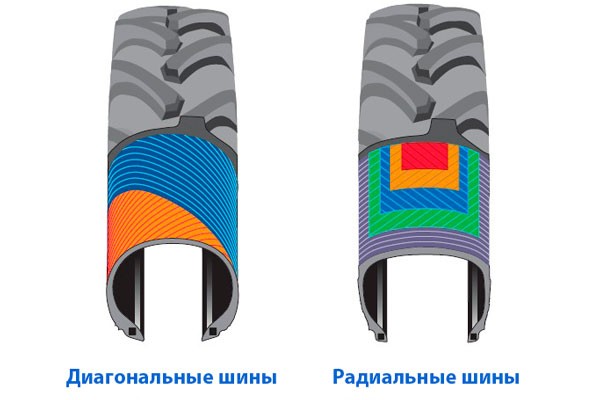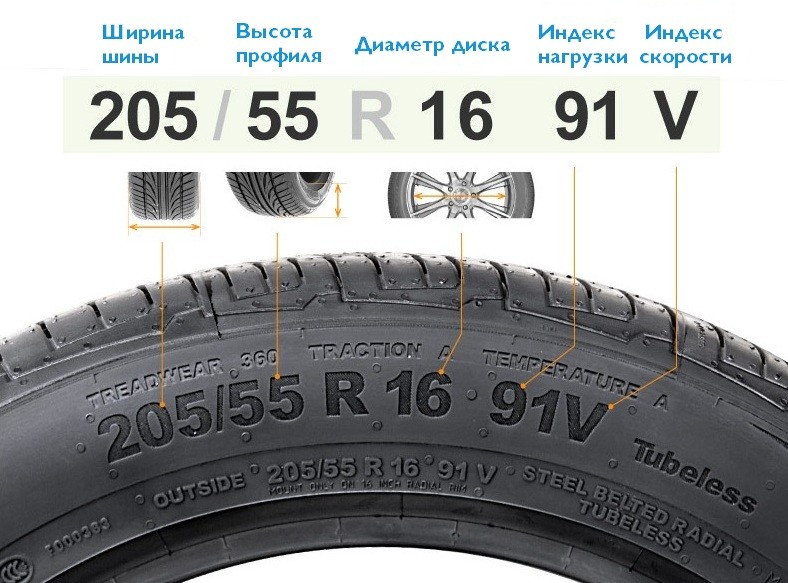
Radial tires - a revolution that is over 70 years old
Content
The introduction of radial tires (also known as radial tires) has responded to the challenges faced by the rapidly developing automotive industry - reducing production costs, reducing rolling resistance, providing better stability while driving, or reducing the amount of rubber used. Although cross-ply tires were popular, especially in the US, their use gradually became limited to industrial or agricultural applications until the 70s. It's time to discuss both designs - how they differ and what are their strengths and weaknesses.
Diagonal tires - what is it characterized by?
The first bias-ply tire appeared on the market in 1898, replacing the previous all-rubber tires. In this solution, alternating cords play an important role - at an angle of 20 to 40 degrees with respect to the axis of the front side of the tire. The result was a significant improvement over its predecessors – the tire is much more durable, more stable and offers greater driving comfort. Not surprisingly, for many years this solution was practically the only standard used in the automotive industry. Unfortunately, their use has also been associated with higher fuel consumption, which motivated automakers to look for other solutions.
Bias Tire - Construction
In a diagonal splint, the warp threads intersect each other and require at least two layers. This results in a very rigid tire carcass and no need for belts, although hybrid tires using it are becoming increasingly popular. Models with a diagonal belt are much more common on motorcycles, as they cope well with high speeds - well above 100 km / h.
Radial tires - why have they gained popularity?
The forerunner of radial tires can be considered the "fly trap", introduced in 1941 by a Michelin engineer, the beads of which were made of steel wire, located every 1,5 cm. This allowed to limit the heating of the tires, provide a more stable ride and reduce rolling resistance, and means the need for fuel. Not surprisingly, the project aroused great interest in the tire industry and was soon popularized. Until the 70s, they practically dominated the European markets, and soon the American ones. This does not mean, however, that diagonal designs are completely a thing of the past.
How are radial tires made?
Regardless of the design of the tire, one of its most important elements is the cord, i.e. thin pieces of fabric placed between opposite wires. They are the skeleton of the tire, affecting its behavior on the road. Radial models have cord strands that are perpendicular to the direction of travel, and their ends wrap around the wires - the strands never intertwine with each other. Often additional layers of the belt are used, most often textile. Above the cord there is only a tread, and under it is a butyl layer that seals the tire.
How do radial tires work in practice?
Today, it is actually difficult to compare the behavior of both types of tires, mainly due to their different uses and primary purpose. In passenger cars, as in most motorcycles, we will find radial solutions that have made it possible to significantly reduce the size of the sidewalls of the tires - which in turn paved the way for the popularity of low-profile tires, which can be found in almost every new car. Radial tires are something we value in the latest vehicles: better grip in all conditions, greater tread stiffness, even in dynamic cornering, and significantly lower rolling resistance.
Where are diagonal tires still used?
Bias tires used in the past have undergone many improvements and today are often found with belts and additional carcass layers. This made it possible to further strengthen the tire, reducing its susceptibility to deformation or damage. They are ideal for vehicles used in heavy transport and industry, for driving on damaged and uneven surfaces or in agricultural machinery. They deal with damage very well. with reinforced sidewall construction. SUV owners appreciate the increased level of comfort, especially when driving off-road and poor-quality asphalt.
Radial or diagonal - both types are useful!
Depending on the use, each of the individual types of tires finds its application in which it proves useful. Radial models primarily provide better traction, while diagonal models, due to their design, are used for heavy agricultural equipment, SUVs and a fairly large number of motorcycles.
